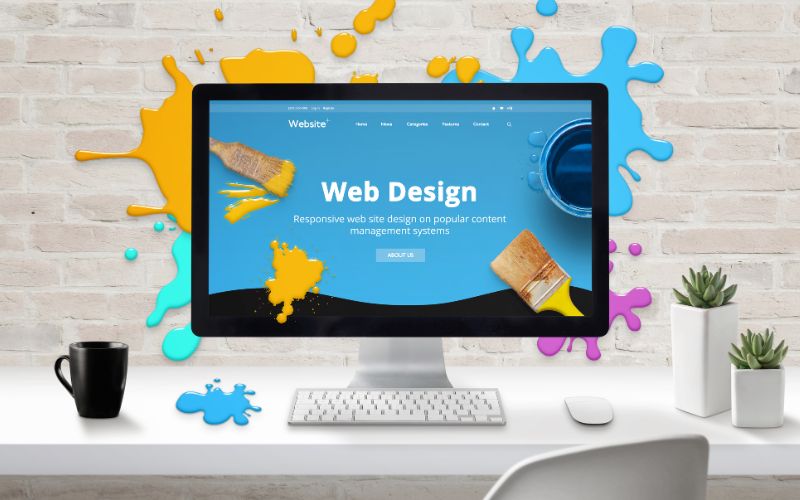In today’s tech-driven world, staying updated with the latest tools and frameworks isn’t just smart; it’s essential. Especially if you’re diving into a full-stack website development course, you want to learn what the industry actually uses.
And let’s be honest, there’s always something new — whether it’s a JavaScript framework or a faster backend toolkit. But which ones truly matter? Which are used by real companies on real projects?
Let’s understand the trending frameworks in full-stack web development and why they are included in modern web development classes across India and beyond.
Why Frameworks Matter in Web Development?
Frameworks aren’t just “nice to know”. They’re the backbone of efficient, scalable, and modern web applications.
Think of them as pre-built toolkits. Instead of coding everything from scratch, developers use frameworks to handle common functions, like routing, database access, user authentication, and UI components.
Knowing the right frameworks gives you a head start in a competitive job market. It shows employers you’re not just learning theory; you’re ready to work.
What Makes a Framework “Trending”?
Before we dive into the list, here’s what we mean by “trending”:
- Industry adoption: Are companies using it?
- Community support: Is there documentation, tutorials, and ongoing updates?
- Demand in job postings: Are employers asking for it?
- Future potential: Is it just a fad or here to stay?
Front-End Frameworks That Are Hot Right Now
Everyone’s got their favourite, but these are the ones developers keep reaching for in 2025.
1. React.js – The Unshakable Favourite
React isn’t new, but it’s still at the top. It’s fast, component-based, and maintained by Meta (formerly Facebook). Nearly every modern full-stack website development course includes React as part of the front-end training.
Why it’s trending:
- Huge community support
- Works seamlessly with APIs and back-end frameworks
- Flexible for mobile apps via React Native
Good to know: Learning React also sets you up to understand frameworks like Next.js and Gatsby.
2. Vue.js – Lightweight and Developer-Friendly
Vue’s gentle learning curve makes it a hit with beginners. But don’t let that fool you, it’s used in production by major players like Alibaba and Xiaomi.
Why it’s trending:
- Simpler syntax compared to React
- Great documentation
- Ideal for building quick, responsive interfaces
Pro tip: If React feels too “corporate”, Vue might be your new best friend.
3. Svelte – The New Kid With Serious Potential
Svelte compiles your code into pure JavaScript at build time – no virtual DOM, no heavy bundle size.
Why it’s trending:
- Blazing fast
- Super clean syntax
- Gaining popularity among startups
If your web development classes are teaching Svelte, take it seriously. It’s not mainstream yet, but it’s coming.
Back-End Frameworks Dominating the Stack
From server-side logic to API handling, these back-end frameworks power the core of modern web apps. And they’re doing the heavy lifting right now.
1. Node.js with Express.js – Still Going Strong
Node.js isn’t technically a framework; it’s a runtime. But Express is the go-to framework for building REST APIs on top of Node.
Why it’s trending:
- JavaScript on both front-end and back-end? Yes, please.
- Easy to learn, even for beginners
- Great for real-time apps (like chats or live notifications)
No surprise that Node and Express still lead many website development course syllabi.
2. Next.js – Not Just for the Front-End
Next.js started as a React framework for server-side rendering. But it’s quickly evolved into a full-stack toolkit with back-end API routes.
Why it’s trending:
- SEO-friendly (great for dynamic sites)
- Built-in routing and API support
- Fast page loads and smart caching
Next.js is ideal for building production-ready apps without switching between tools.
3. Django – Python-Powered and Battle-Tested
Django is the way to go if your stack leans more toward Python than JavaScript. It’s a high-level framework that follows the “batteries-included” philosophy.
Why it’s trending:
- Includes everything: ORM, admin panel, security
- Perfect for rapid prototyping
- Used by Instagram, Pinterest, and others
It’s often featured in full-stack website development courses focusing on Python rather than JavaScript.
Full-Stack Frameworks: The Best of Both Worlds
If you like having everything in one place, these full-stack frameworks are worth a look.
1. Meteor.js – All-In-One JavaScript Framework
Meteor lets you build in JavaScript from end to end. It’s less popular now than it once was, but it is still useful for real-time apps.
Why it’s trending:
- Unified development experience
- Real-time updates baked in
- Great for chat apps, dashboards, or games
If your web development classes focus on rapid prototyping, you might run into Meteor.
2. Laravel with Vue/React – PHP Isn’t Dead
Laravel is a powerful back-end framework for PHP, often paired with Vue or React on the front end.
Why it’s trending:
- Elegant syntax
- Solid documentation
- Huge in the freelance and startup world
Laravel isn’t just for WordPress replacements; it’s a solid option in full-stack builds.
Frameworks Gaining Popularity in 2025
Keep your eye on these rising stars:
- Bun.js: A blazing-fast Node.js alternative
- Remix: Built by ex-React Router devs, focused on performance
- Astro: Optimised for content-heavy websites and blogs
- Qwik: Promises lightning-fast load times by prioritising resumability
These may not be staples in every web development course yet, but they’re getting attention.
Learn These Frameworks with Moople’s Industry-Ready Curriculum
At this point, you might be thinking, “Alright, this sounds exciting, but how do I start?”
That’s where we come in.
At Moople Academy, we don’t just teach theory; we focus on tools and frameworks that the industry wants. Our trainers are working professionals. Our curriculum updates regularly. And we make sure every project you build helps you get hired.
Whether you’re a beginner looking for your first web development course or someone levelling up with advanced website development classes, we’ve got your back.
- Real-Time Projects: You won’t just follow tutorials — you’ll build stuff. From mock business dashboards to portfolio-ready applications, it’s the kind of work employers want to see.
- Hands-On Mentorship: Stuck somewhere? You won’t be left to Google your way out of it. Our mentors work alongside you, explaining, reviewing, and guiding with real-world know-how.
- Career-Focused Roadmap: This isn’t random content thrown together. We’ve designed every module to move you closer to real job roles, interviews, and practical expectations in the field.
Wrapping Up: Staying Ahead of the Curve
Frameworks will continue to change. What’s trending today might be replaced tomorrow. However, you’ll always be in demand if you understand the fundamentals and stay open to learning,
A great full-stack website development training doesn’t just teach you tools. It teaches you how to adapt. To think like a developer. To keep building.
So pick your stack, get your hands dirty, and remember, no one becomes a pro without writing a few bugs.
FAQs
1. What is the best framework to learn in 2025?
React.js is still the most popular front-end framework, followed by Vue.js and Svelte. Node.js and Django continue to lead in the back-end.
2. Can I get a job after completing a website development course?
Absolutely. A well-structured website development course gives you the foundation you need. With hands-on projects and a strong portfolio, you can pursue entry-level roles, internships, or freelance work.
3. Are frameworks different from programming languages?
Yes. Programming languages (like JavaScript or Python) are the foundation. Frameworks (like React or Django) are built on top to make development faster and easier.
4. Do I need to learn both front-end and back-end frameworks?
Not necessarily. But knowing both (i.e. being “full-stack”) makes you more flexible and valuable to employers. That’s why full-stack website development classes are increasingly popular.

